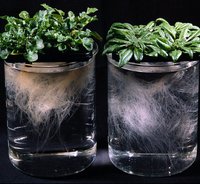Metal and Metalloid Tolerance Mechanisms of Metal Hyperaccumulator Plants and Their Applications for Human Extraterrestrial Colonies

When: December 2, 2014 3PM PST


Worldwide more than 400 plant species have evolved the extreme ability to hyperaccumulate the following elements in their shoots; metals (nickel, zinc, cadmium, cobalt, or manganese) and metalloids (arsenic and selenium). Of these species, almost one-quarter are Brassicaceae family members, including numerous species that hyperaccumulate metals up to 3% of shoot dry weight. Brassicaceae model species have been developed to study the molecular mechanisms of metal tolerance and hyperaccumulation and our recent findings hold promise for improving plant growth in metal enriched environments which is useful for rhizofiltration of water, phytoremediation of soils and for increasing the mineral nutrition of crop plants. The knowledge gained by researching metal hyperaccumulator plants clearly holds potential value for developing plant based applications for use in the phytoremediation of earth’s polluted environments and also for use in developing bioengineered life support systems required for long term manned space travel and for in situ resource utilization (ISRU), which are required processes for the long term human colonization of extraterrestrial planetary bodies.
 Getting Under Europa’s Skin
Getting Under Europa’s Skin Tracing Formation and Evolution of Outer Solar System Bodies Through Stable Isotopes and Noble Gas Abundances
Tracing Formation and Evolution of Outer Solar System Bodies Through Stable Isotopes and Noble Gas Abundances Photosynthesis, a Planetary Revolution
Photosynthesis, a Planetary Revolution Xenon: King of the Gases
Xenon: King of the Gases